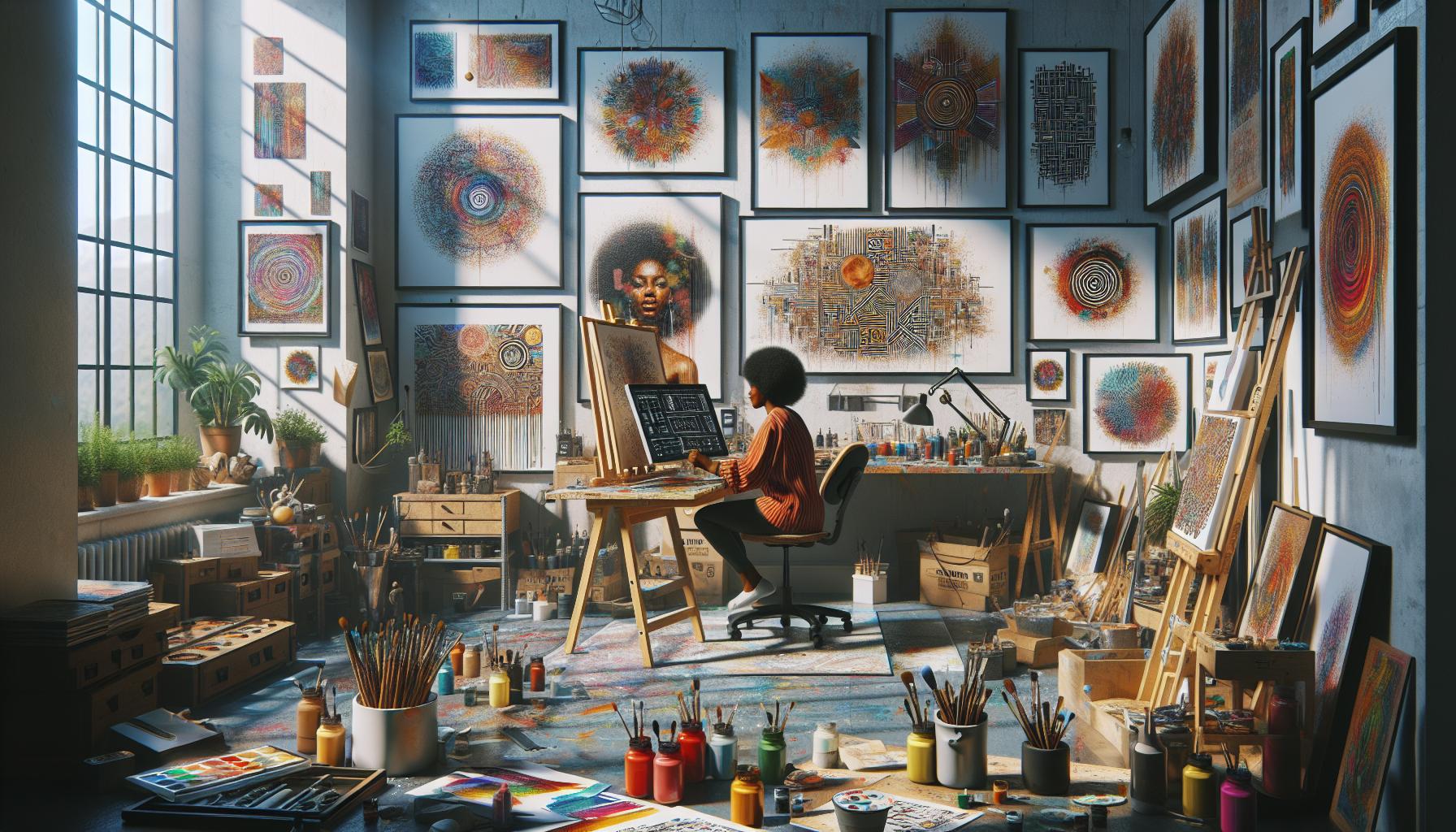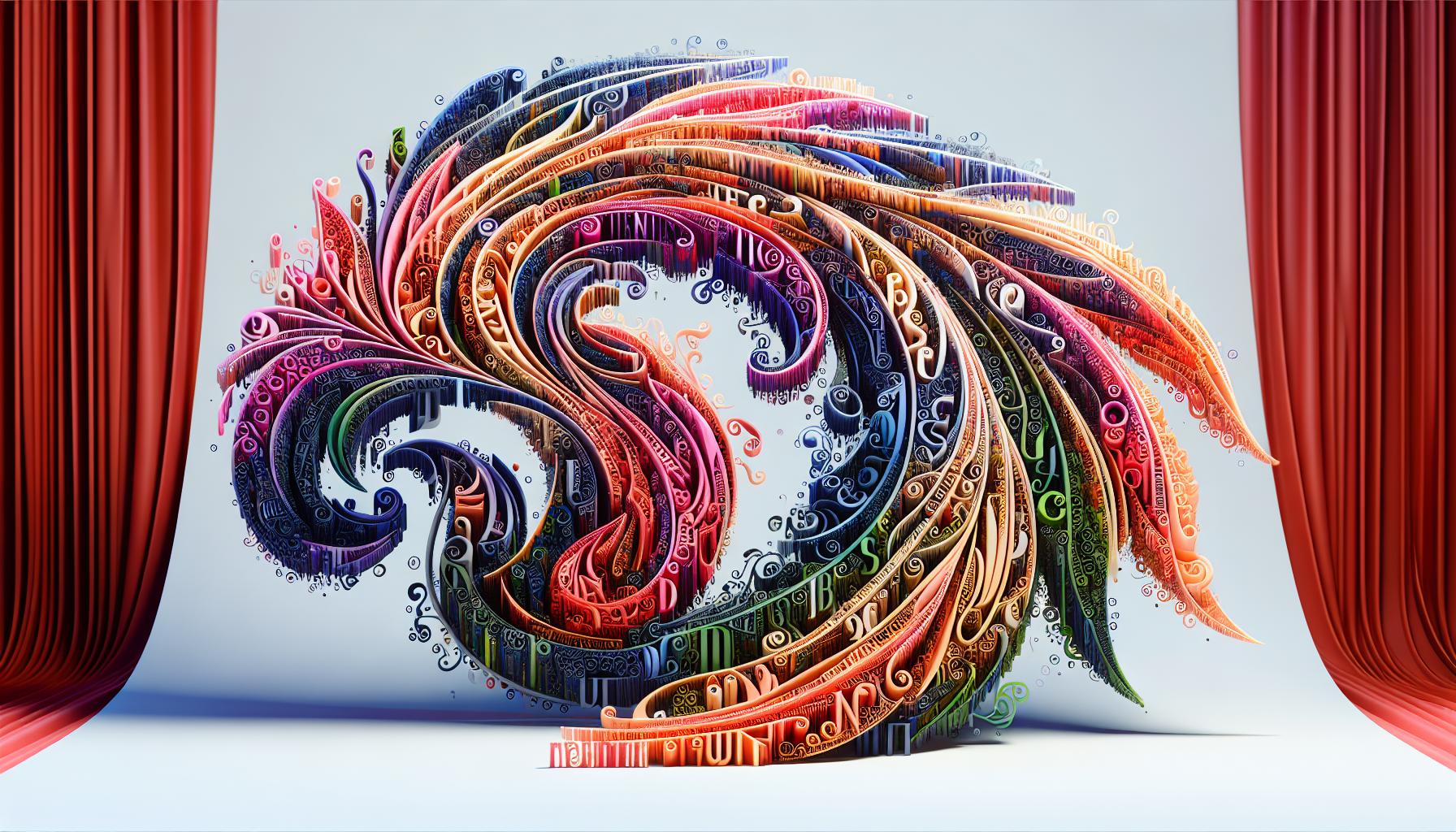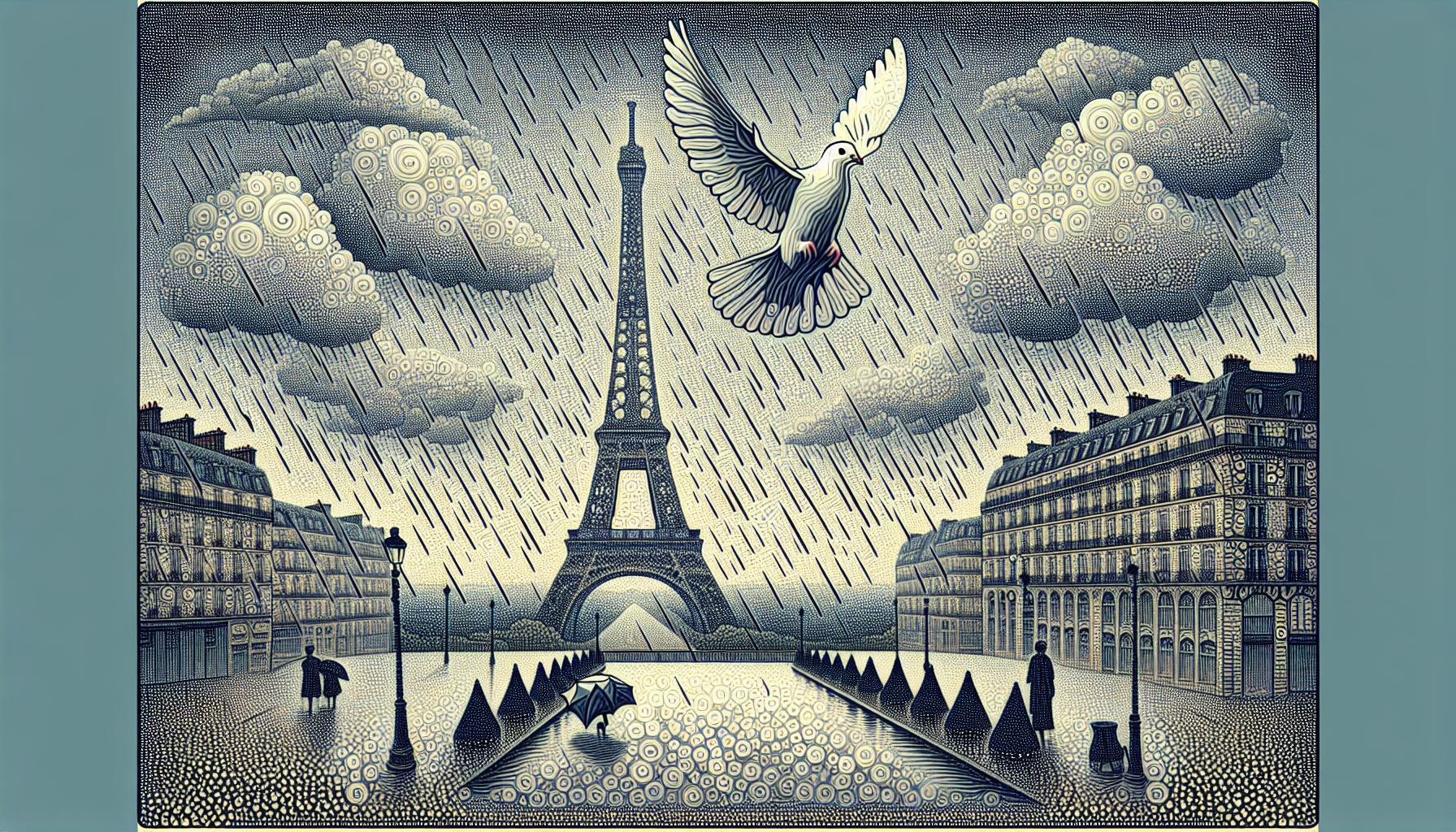In the mesmerizing world of visual poetry, caligramas stand as a testament to artistic innovation where words transform into pictures. These creative compositions merge the power of language with visual artistry, crafting shapes and images that perfectly complement their written meaning.
Step into a realm where letters dance across the page creating dolphins, stars or even the Eiffel Tower. First popularized by Guillaume Apollinaire in the early 20th century, caligramas have evolved into a dynamic form of expression that continues to captivate readers and artists alike. It’s where poetry breaks free from traditional linear constraints to become a playground of typographical imagination.
Facil:xk8h17grcda= Caligramas
Calligrams transform traditional poetry into visual art by arranging text to create meaningful shapes. The text forms recognizable images while maintaining readable verses, creating a dual artistic experience. Letters cascade across the page in deliberate patterns, forming objects like stars, hearts or architectural elements.
Three key elements define successful calligrams:
- Typography manipulation creates distinct visual forms through varied font sizes spacing patterns
- Semantic alignment matches the shape with the poem’s meaning or theme
- Spatial composition balances negative space with text density
Modern calligrams incorporate these artistic techniques:
- Dynamic text flow follows organic curved lines
- Multilayered designs overlap words to add visual depth
- Mixed typography combines different fonts for visual interest
- Color integration enhances the visual impact
- Digital tools enable precise letter placement control
Here’s how calligrams differ from conventional poetry:
| Feature | Traditional Poetry | Calligrams |
|---|---|---|
| Layout | Linear text lines | Shape-based arrangement |
| Visual Impact | Limited to line breaks | Creates pictorial images |
| Reading Flow | Top to bottom | Follows shape contours |
| Artistic Elements | Word choice rhythms | Typography spatial design |
The visual arrangement amplifies the poem’s meaning through symbolic representation. Each word placement contributes to both linguistic expression artistic composition. Text elements serve dual roles as building blocks for imagery meaningful phrases.
- Mapping key phrases along shape outlines
- Varying text density to define forms shadows
- Incorporating white space as design elements
- Aligning thematic words with visual focal points
The History and Evolution of Calligrams

Calligrams trace their origins to ancient civilizations that explored the fusion of text and imagery. The artistic practice evolved from simple pictorial arrangements to complex visual compositions that challenge traditional poetic boundaries.
Early Developments in Visual Poetry
Pattern poetry emerged in ancient Greece through works like Simmias of Rhodes’ “Egg” poem in 300 BCE. Medieval monks enhanced manuscripts with shaped texts called carmina figurata depicting religious symbols like crosses. Chinese poets created visual arrangements during the Tang Dynasty (618-907 CE) using characters to form natural elements. The Renaissance period introduced technopaegnia innovations with George Herbert’s “Easter Wings” (1633) setting text in wing patterns. Guillaume Apollinaire popularized modern calligrams in 1918 through his collection “Calligrammes: Poems of Peace and War” featuring text arranged in meaningful shapes.
Modern Calligram Movements
Digital technology transformed calligram creation in the 1990s through design software applications. Contemporary artists integrate multimedia elements like animation interactive features color gradients into calligrams. Social media platforms sparked renewed interest with #calligramchallenge trends inspiring global participation. Experimental poets incorporate augmented reality expanding calligrams into three-dimensional spaces. Typography artists leverage computational design to generate complex pattern-based calligrams. Street artists adapt calligram techniques to create large-scale urban installations combining poetry with architectural elements.
Key Elements of Calligram Creation

Creating effective calligrams requires mastering specific artistic elements that blend textual content with visual composition. These elements work together to produce meaningful visual poetry that engages readers on multiple levels.
Typography and Letter Arrangement
Typography serves as the foundational building block of calligram creation. Letters vary in size from 8 to 72 points to establish visual hierarchy throughout the composition. Curved text paths guide the eye along specific routes while maintaining readability. Font selection impacts the overall mood with serif fonts creating classical effects serif fonts delivering modern aesthetics. Strategic letter spacing creates density variations that define shapes edges contrasts depths. Artists manipulate individual characters through rotation stretching compression to achieve precise outline formation. Digital tools enable precise kerning adjustments at 0.1-point increments for seamless character transitions.
Visual Symbolism and Meaning
Calligrams connect imagery to text through strategic symbol placement. The shape’s outline reinforces the poem’s theme through direct visual representation. Negative space between letters creates secondary patterns that add layers of meaning. Text density variations highlight focal points emphasizing key phrases concepts. Color application enhances emotional resonance with warm tones expressing passion cool tones suggesting serenity. Visual elements mirror linguistic devices such as metaphors alliteration rhythm. The arrangement transforms abstract ideas into concrete visual metaphors that readers interpret simultaneously. Artists integrate cultural symbols universal archetypes to expand interpretative possibilities.
Notable Calligram Artists Through History

Calligram artistry spans multiple centuries with innovative creators who shaped this unique form of visual poetry. Each artist brought distinctive techniques and perspectives to the medium, advancing its evolution through different artistic movements.
Guillaume Apollinaire’s Influence
Guillaume Apollinaire revolutionized calligrams in early 20th century France, publishing his groundbreaking collection “Calligrammes” in 1918. His works transformed traditional poetry by crafting intricate visual compositions depicting subjects from everyday life: rain falling down a page, a dove in flight, the Eiffel Tower stretching skyward. Through experimental typography, Apollinaire created pieces like “Il Pleut” (It Rains) where letters cascade vertically to mimic rainfall patterns. Literary scholars consider his piece “La Colombe Poignardée” (The Stabbed Dove) a masterwork of calligram art, combining antiwar sentiment with visual symbolism. Apollinaire’s techniques influenced major artistic movements including Surrealism Dadaism. His innovations in spatial composition laid the foundation for modern visual poetry, inspiring generations of artists to explore the intersection of text and image.
| Notable Apollinaire Calligrams | Year Created |
|---|---|
| Il Pleut (It Rains) | 1916 |
| La Colombe Poignardée | 1918 |
| La Tour Eiffel | 1918 |
Digital Tools for Creating Calligrams
Adobe Creative Suite offers specialized tools for calligram creation, with Illustrator’s text-on-path feature enabling precise letter placement along custom shapes. Photoshop’s text warping capabilities allow artists to manipulate typography through 15 preset effects including arc, wave, and flag styles.
Specialized calligram software includes:
- Calligraphr: Creates custom fonts from handwritten characters
- WordArt Generator: Shapes text into predefined forms
- TypeDrawing: Enables real-time text manipulation on digital canvases
- Wordific: Generates automatic shape-based text arrangements
Online platforms streamline the creation process:
| Platform | Key Features | Output Format |
|---|---|---|
| Canva | 50+ templates, drag-drop interface | PNG, JPG, PDF |
| WordClouds | Shape-based text arrangements | SVG, PNG |
| Tagxedo | Dynamic text flow tools | JPG, PNG |
| CalligramR | AI-assisted layout generation | Vector formats |
Mobile apps enhance accessibility:
- TypiMage: Converts photos into text-based art
- FontArt: Offers 200+ premade calligram templates
- TextArt: Features real-time shape manipulation
- Letter Artist: Includes gesture-based text shaping
Advanced digital features incorporate:
- Layer management for complex compositions
- Vector scaling without quality loss
- Multiple font integration in single designs
- Color gradient applications
- Export options for various media formats
These digital tools facilitate precise typography control while maintaining the artistic essence of traditional calligrams through automated shape recognition contextual alignment features.
Contemporary Applications and Examples
Contemporary calligrams extend beyond traditional poetry into diverse creative fields. Digital artists transform social media posts into engaging visual narratives through typographic designs shaped as product silhouettes or brand logos.
Architecture firms incorporate calligraphic elements in building facades, such as the Qatar National Library’s exterior featuring Arabic poetry flowing across its walls. Fashion designers integrate text-based patterns into clothing, creating wearable poems that form abstract shapes or recognizable symbols.
Modern advertising campaigns leverage calligrams to enhance brand messaging:
- Nike’s “Just Do It” campaigns arrange text in running figure silhouettes
- Coca-Cola’s holiday promotions shape text into festive symbols
- Environmental organizations create animal-shaped messages for conservation awareness
Digital installations showcase interactive calligrams:
- Motion-sensitive displays that respond to viewer movements
- Augmented reality experiences projecting 3D text sculptures
- LED screens displaying dynamic word formations
| Platform | Application Type | Notable Examples |
|---|---|---|
| Social Media Art | @typographers (850k followers) | |
| Urban Spaces | Public Art | Paris Poetry Wall |
| Mobile Apps | Digital Creation | WordArt (2M+ downloads) |
Educational institutions utilize calligrams for creative learning:
- Language schools teach vocabulary through shape-based word arrangements
- Art therapy programs use text-shape exercises for emotional expression
- STEM education combines typography with mathematical concepts
- Laser-cut metal sculptures featuring layered text designs
- Projected light installations with morphing word patterns
- Virtual reality spaces filled with navigable text landscapes
Conclusion
Calligrams stand as a testament to the endless possibilities when words and visual art merge. This unique form of expression continues to evolve through digital innovation while maintaining its core artistic principles. From Apollinaire’s groundbreaking works to modern digital installations artists keep pushing creative boundaries.
The fusion of typography technology and artistic vision has transformed calligrams into a versatile medium that spans architecture fashion and education. As digital tools become more sophisticated creators find new ways to craft these visual poems ensuring that calligrams remain relevant in contemporary artistic expression.
This enduring art form proves that the written word can transcend its traditional bounds to create meaningful experiences that engage both the mind and eye.



